My Wife, An Artist Of Lost and Found
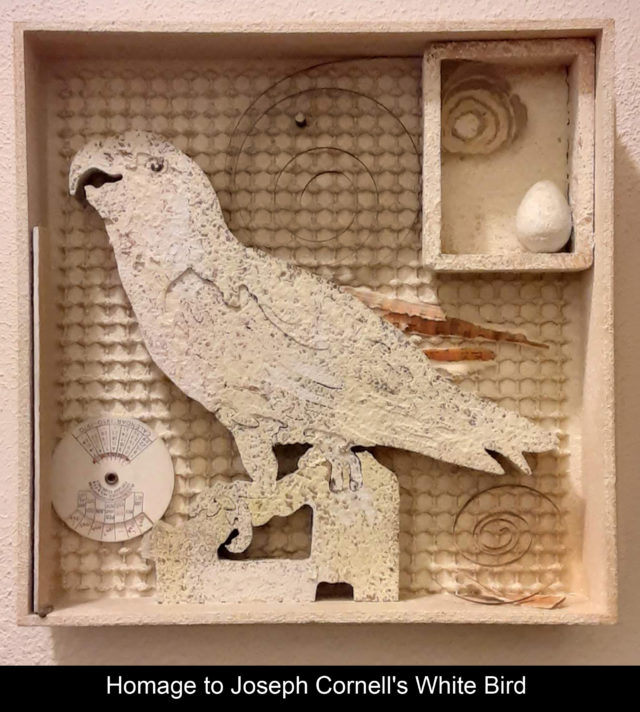
My wife of 67 years, Thelma Kandel, used to be an editor and author. Now she’s an artist. But not just an ordinary artist. She creates collages and fills boxes by using found objects, or “unclaimed treasures,” as she prefers to call them.
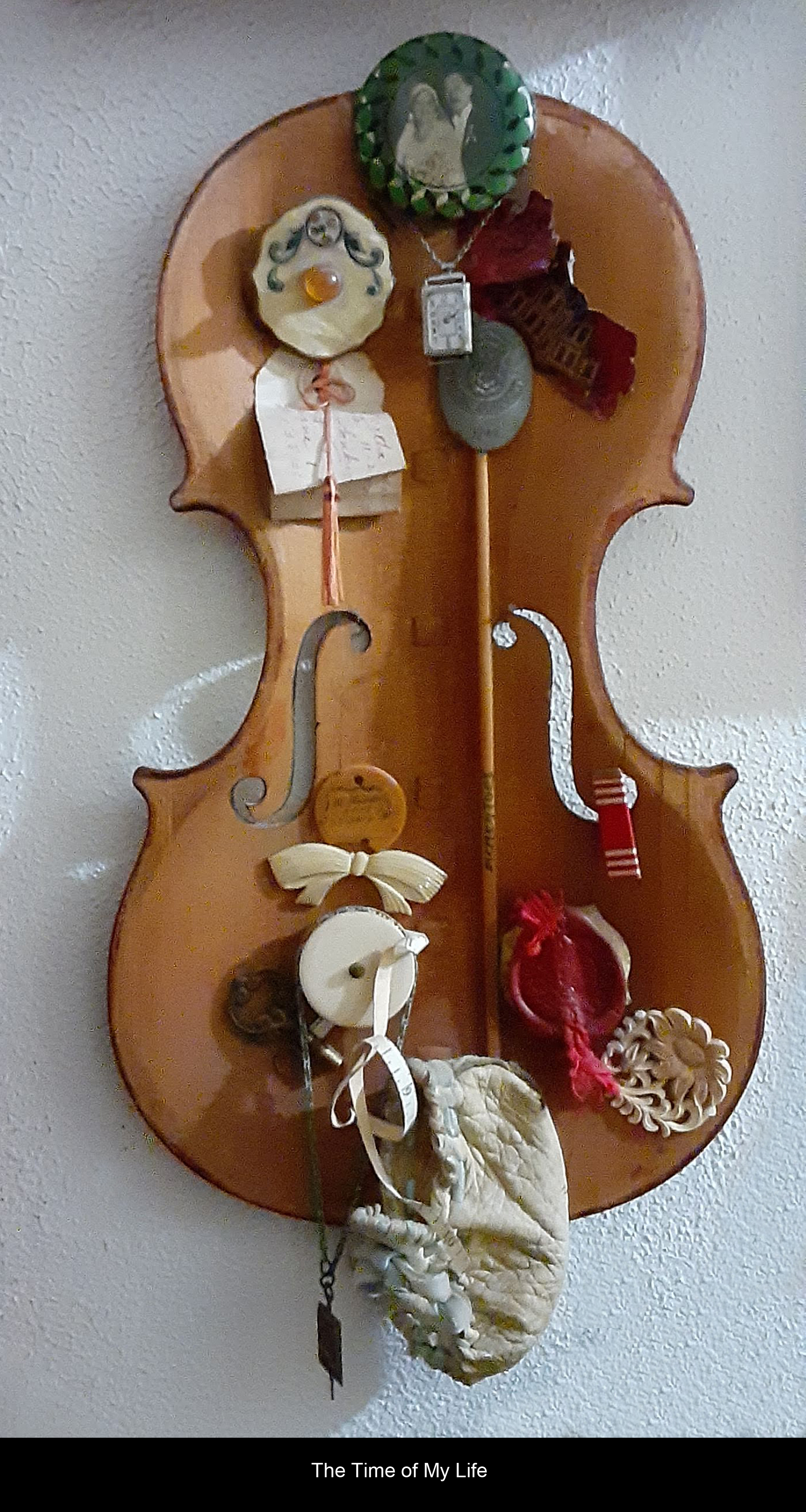
She finds these objects in all sorts of places — in junkyards. thrift shops, dumpsters and mostly on the streets of New York and other cities and villages around the United States, even in foreign countries. The joke among our children and grandchildren is that we’re the only family that walks the street looking down rather than up.
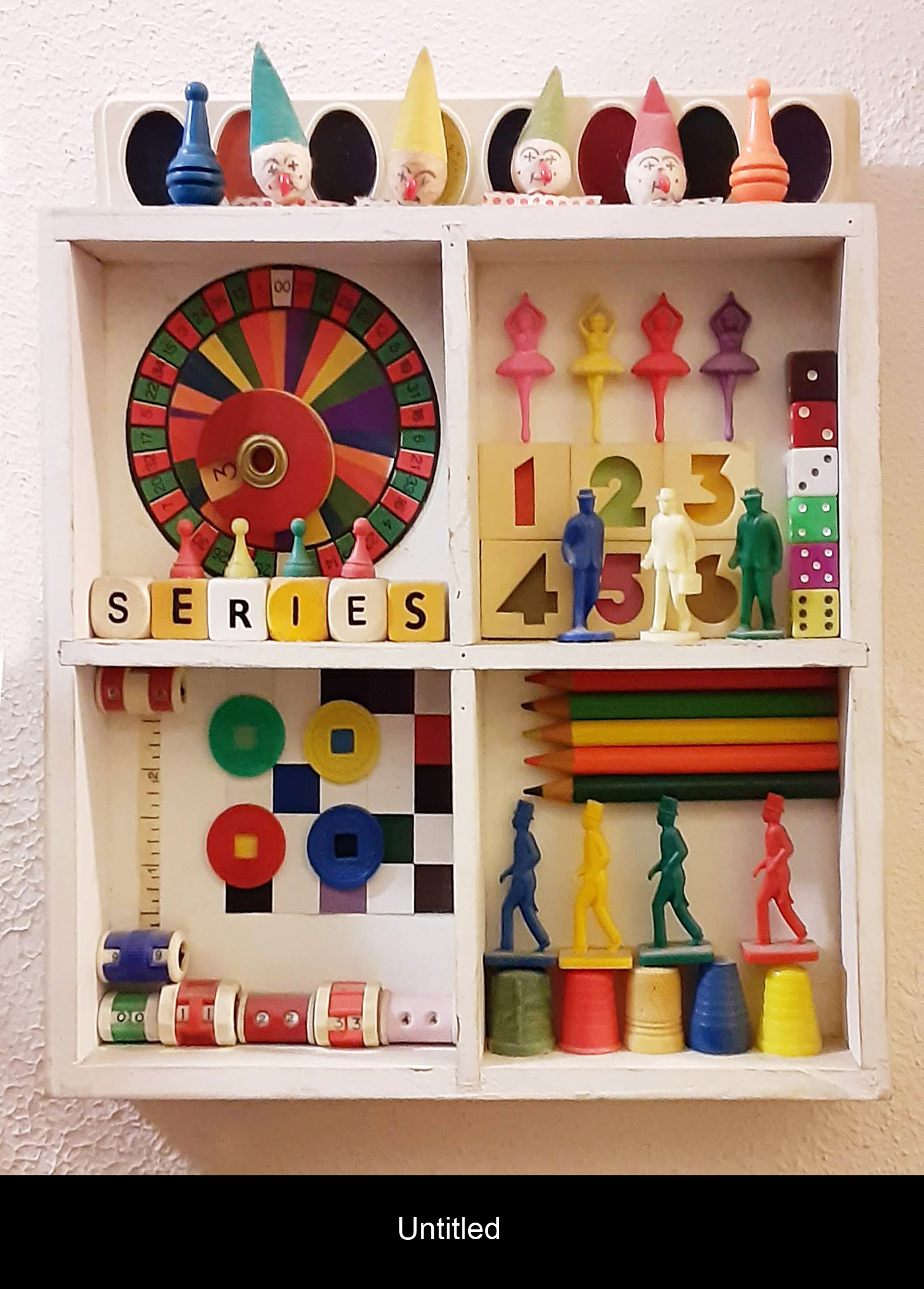
The walls and floor-to-ceiling bookshelves of our spacious Manhattan apartment are filled with more than 200 of her works and our Connecticut week-end home has nearly 100 more. She won’t sell any of them, although she receives constant offers to do so. I’m convinced that some day they’ll be in a museum, but right now they’re a precious part of our homes.
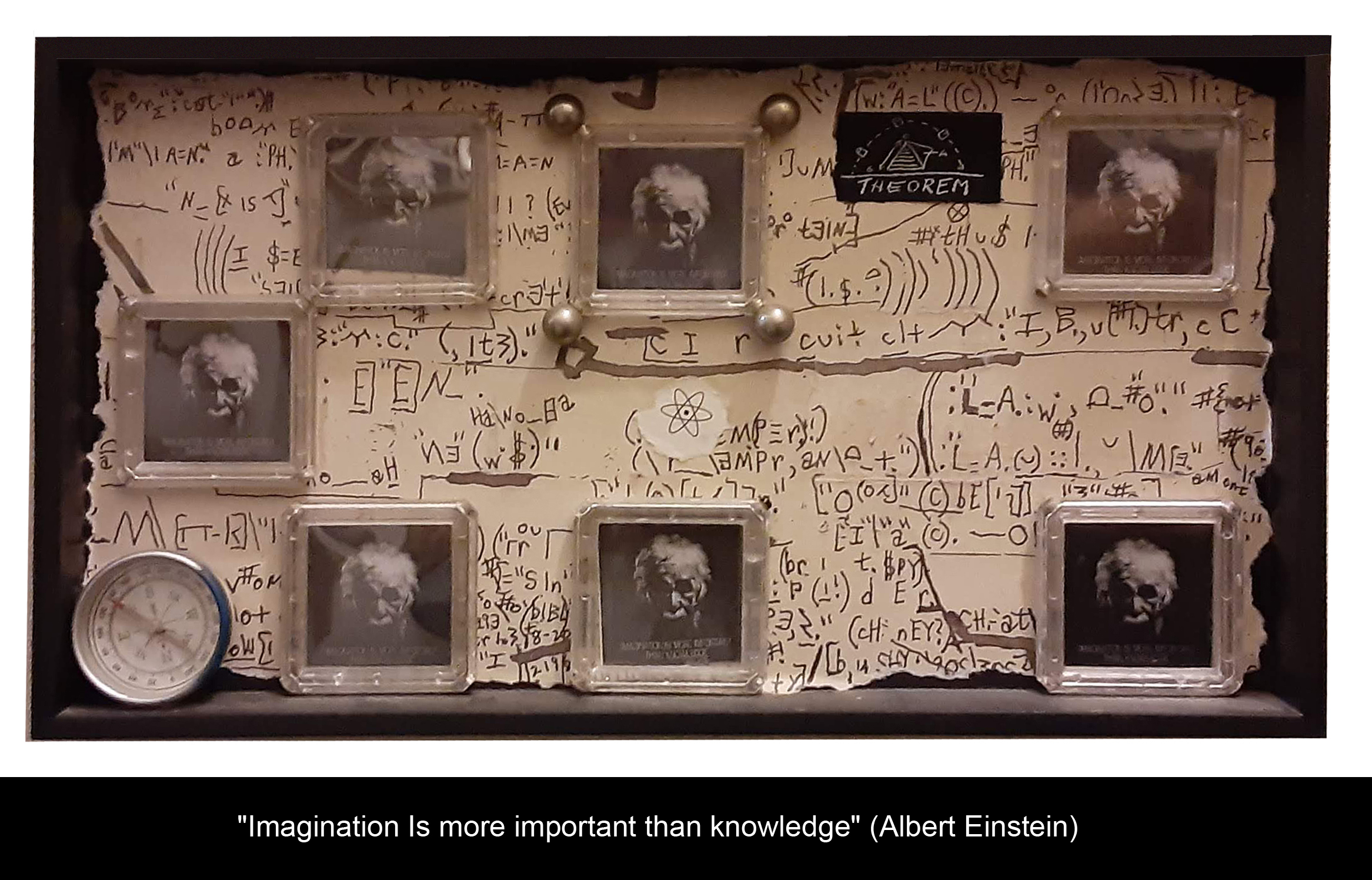
Only once has she allowed her works to leave, and that’s when the former president of Brooklyn College, our joint alma mater, convinced her to allow many of them to be exhibited in a one-woman show at the college’s student center. The curator of the exhibition said she shares with many famous artists “an ability to appreciate and to make distinctive the truly precious that lies within the potentially ignored.”

What makes her work even more special are the clever and imaginative names she has affixed to them, reflecting her talent as a wordsmith. For example, one of her early collages shows a small metal airplane heading down a toy railroad track. It’s titled “The Wrong Brothers.”
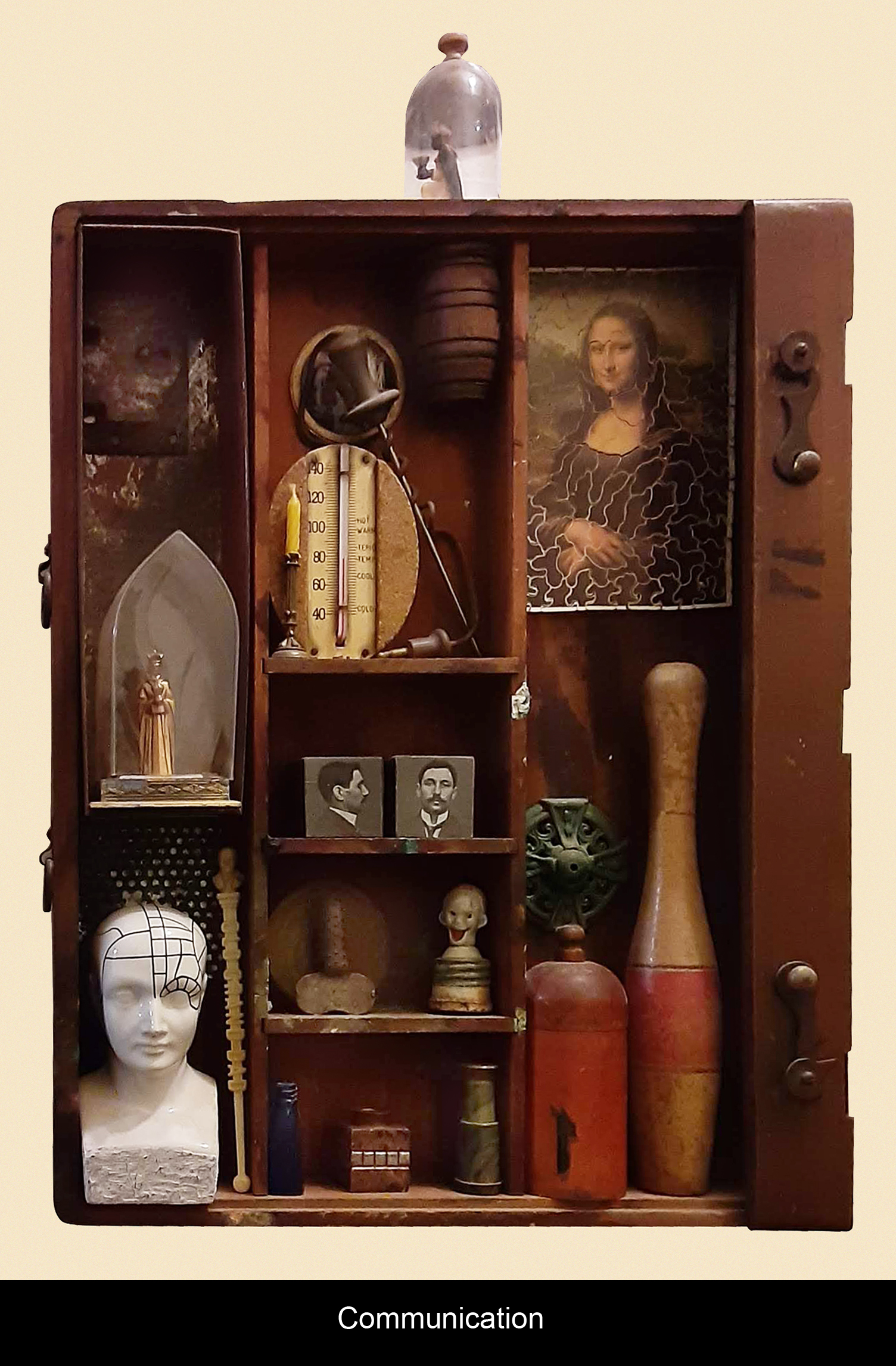
More esoteric is a segmented plastic box containing six small glass vials filled with granules of varying consistencies that she has titled “Placebos.” The bottles carry labels reading “conformity,” “hope,” “denial,” “faith,” “ritual” and “tradition.” Still another, filled with tobacco mementoes in the shape of a woman, is titled “Nicotina: The Temptress.” Using an old photographic plate as a background, a work filled with camera segments arranged in a female form, is called “Shutterbabe.”
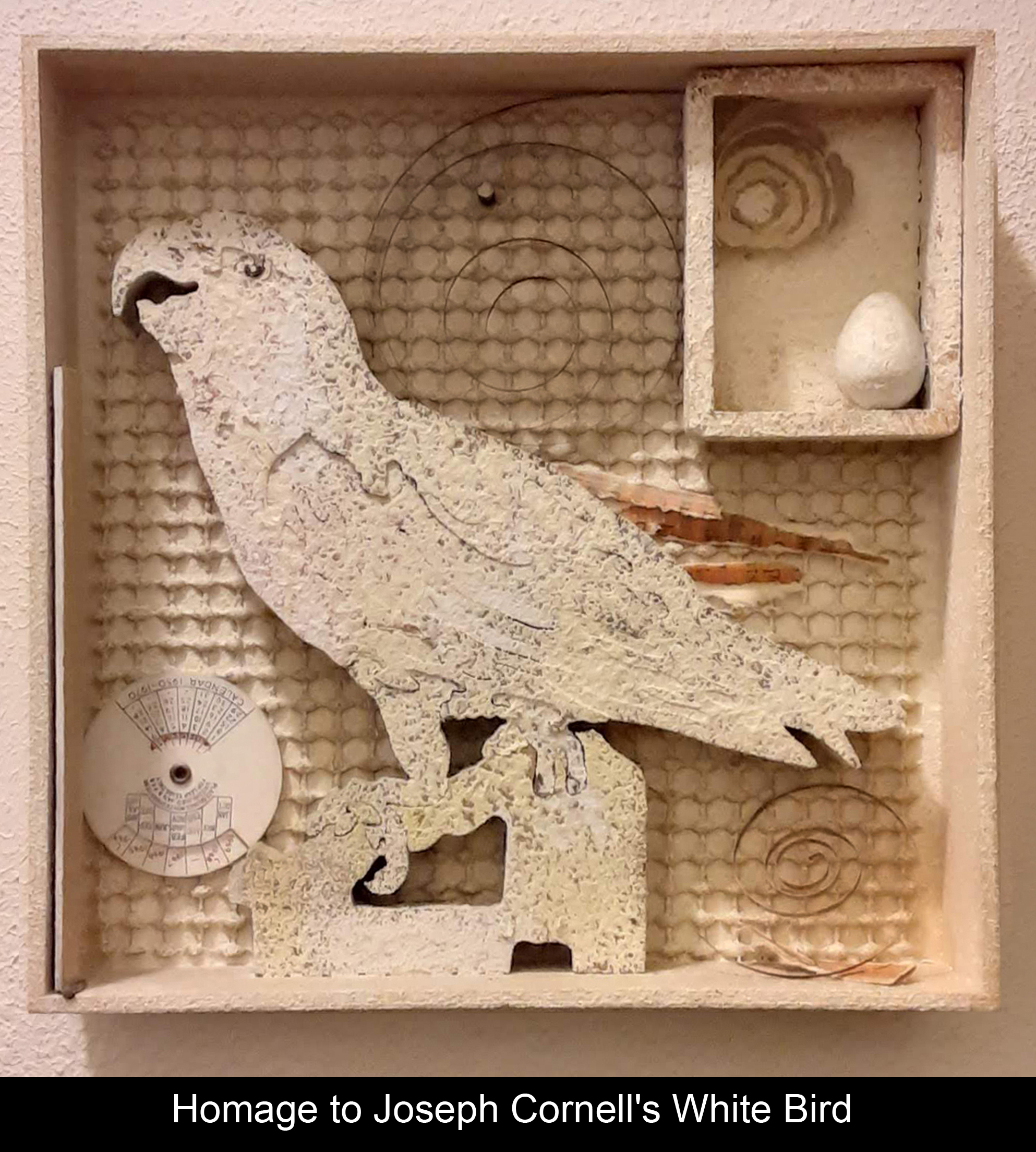
One of her very favorites is in homage to her muse Joseph Cornell, an eccentric artist who specialized in filling wooden boxes with assorted odd items. One, called “Lobster Quadrille,” shows a ballerina with a background of dancing lobsters. Thelma’s work, consisting of a group of dangling white fishing lures against a background of an old mirrored vanity case, titled “Calamari Quadrille,” hangs in a hallway of our apartment. It had been there for some time, and then one night, while passing it in the dark, she discovered to her surprise that the lures glowed in the dark. She delights in turning off the lights and showing the glowing piece to admiring visitors.

Still another of her works — reflecting our book-filled apartment — is a box filled with strategically-placed miniature books surrounding a small lady doll with a skirt made up of tiny book covers. It’s titled “Marian the Librarian.” In fact, Thelma’s unusual art pieces have thoroughly encroached on my book collections. But I — and her many visiting admirers — enjoy their presence even more.
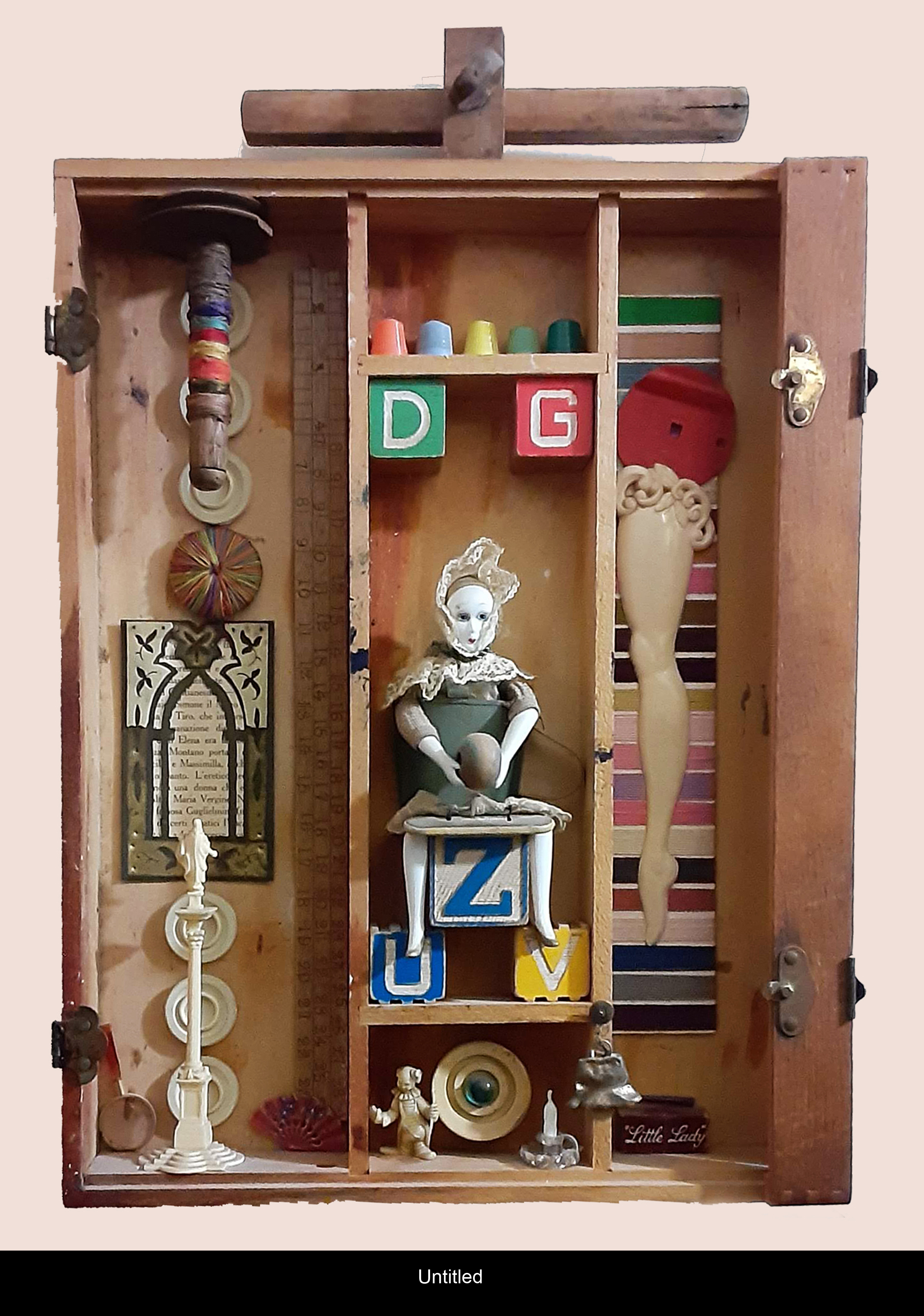
She says she’s retired as a “retired artist,” but every so often, the artistic bug bites her, and another inspired piece appears on one of our bookshelves.








